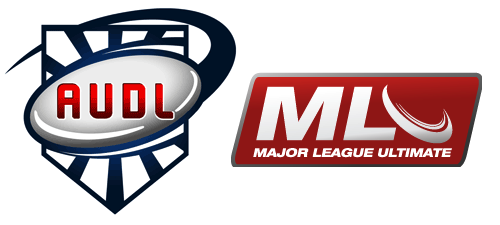February 26, 2013 by Charlie Eisenhood in Opinion with 21 comments
 In just two months, we will embark on the first year with dueling professional ultimate leagues. With the American Ultimate Disc League putting its first year struggles behind it and looking much stronger heading into year two, Major League Ultimate is gearing up for its inaugural pull.
In just two months, we will embark on the first year with dueling professional ultimate leagues. With the American Ultimate Disc League putting its first year struggles behind it and looking much stronger heading into year two, Major League Ultimate is gearing up for its inaugural pull.
There are plenty of intriguing storylines. Of course, the most obvious is that the MLU is being headed up by Jeff Snader, who managed the most successful AUDL franchise last season, the Philadelphia Spinners. With a showy exit, he thrilled many in the ultimate community with his announcement to create a new league, free of the season one drama in the AUDL.
What has become clear in recent weeks is that there is a real sense among many elite level players that the MLU is the preferred league. Last year, the Philadelphia Spinners won the AUDL championship because they had the best team, largely made up of the elite club team Southpaw. Other AUDL teams — many of which were in less established ultimate markets — could not match up down the roster with Philly. They had a handful of good players, but less talent on the bench, often college players or lower-level club players.
That the Spinners are now in the MLU gave the nascent league a leg up on the east coast. The Washington DC team — the Current — will be largely made up of players from Truck Stop, Washington’s elite club team. That leaves the DC Breeze — the AUDL’s franchise in the city — with less top talent. The Philadelphia Phoenix, which replaced the Spinners in the AUDL, will also be less talented, at least on paper.
In the other city where the two leagues are fighting for players — New York City — it is less clear what will happen. Some top players have committed to the AUDL, but rumors suggest that most PoNY players are leaning towards the MLU. Both teams should be strong, but it is looking increasingly likely that the MLU will get the best players in the city.
However, in cities where there is no crossover, both leagues have successfully wooed elite club players. In the AUDL, Toronto and the Midwest teams (i.e. Madison, Chicago, and Indianapolis) all look very strong. In the MLU, the West Coast teams are shaping up to be very good, as is Boston.
What is clear, though, is that the overall average talent in the MLU will be superior to that of the AUDL. The question is: will that matter?
Ultimately what will drive the success of professional ultimate will be fans coming to games. We’ve said it here many times now: ultimate players will not generate enough sales to sustain either league. The goal for the leagues has to be — and is — to reach outside into the mass market to bring families and sports fans to games.
In an article last week on Skyd Magazine, Jeremy Ziskind argued that “ownership structure and first-mover advantage matters less than quality of play.” He says that “getting the best players on the field and fans in the seats” will determine the long-term success of the league.
While I certainly agree that fans in the seats are what matters, it’s not as clear to me that — in the short term — having superior players will lead to better financial success. The average person who has not seen ultimate before will have a difficult time distinguishing between an elite player and a good player. Yes, elite players are marginally more likely to make a big sky or make a huge layout D, but good players do those things all the time, just less frequently. I would argue that parity is more likely to drive turnout than top talent. People want to root for their home team in exciting, close games. Blowouts aren’t much fun.
What’s really going to determine the success of the professional leagues in the next, say, five years is going to be on-the-ground marketing, strategic local partnerships, and community outreach. It will take a grassroots focus and a lot of hard work. It’s true in politics and it’s true in startups.
This is one area where I believe the AUDL has a distinct advantage. With local staff and ownership, the franchises are better positioned than the centralized MLU model to drive attendance at games. I think the Indianapolis Alleycats are a great example. Indy is not known for being an ultimate hotspot, and yet they got the second-highest attendance average in the AUDL last year. (Yes, they had Brodie Smith, which certainly didn’t hurt. But he mostly drove interest in the team, he didn’t put fans in the seats).
Alleycats’ owner Thom Held said as much. He credits hard work from his players and his organization, inviting non-ultimate players to games and holding outreach events, for driving attendance. He thinks Brodie only brought in a few people who wanted to see him play.
It’s not even close to enough to have good players on your team to drive interest. You need an outstanding game day experience (that means good food, fun contests, mascots, etc.). You need modestly priced tickets. You need a sharp focus on engaging with the local community. You need a business model that encourages each team to find their own best mix of the above for their market.
Yes, over time, higher quality players will start to become increasingly important to turnout. But by the time that happens, one of these leagues will have already won out.